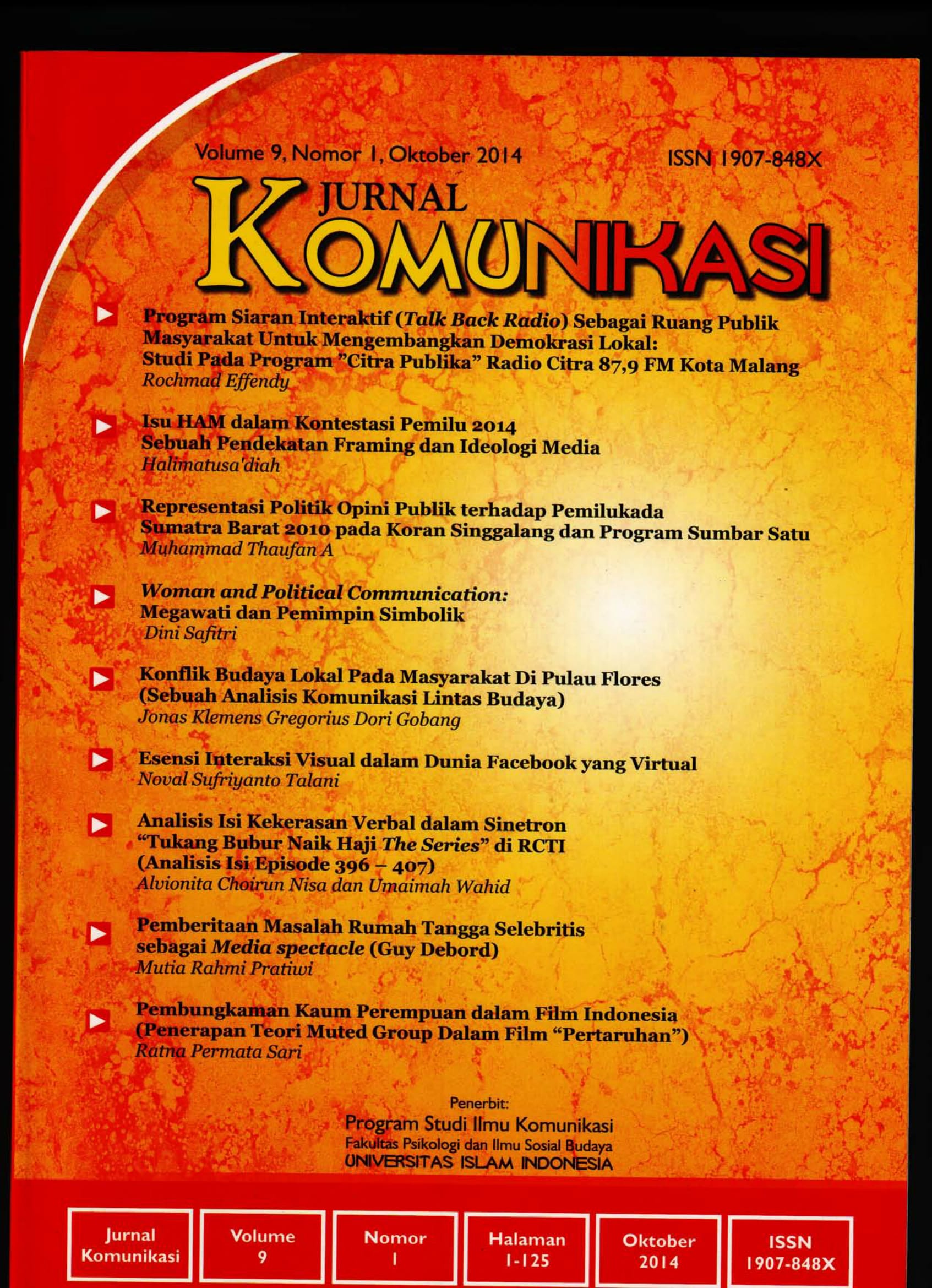Main Article Content
Abstract
This article discusses the phenomenon of interaction on Facebook. This study used a subjective approach with a qualitative research method through the analysis of the phenomenology and symbolic interaction. The study was conducted to determine the essential meaning of symbolic interaction that occurs in the world of Facebook. Through in-depth interviews of 10 people found that Facebook users are interchangeable symbols emoticons users to interact on Facebook has a contextual meaning. At different users’ of a symbol can have different meanings so the meaning is no longer unconventional, but personal. This is caused by the user freedom in using or producing personal emoticon symbols as an expression of nonverbal cues. Essentially, the interaction on Facebook is the visual interaction. Through visual, users’ can display a variety of actions on Facebook including symbolic impression management. Impression management on Facebook is heavily influenced intentional relationship between physical self as a subject in the real world and themselves become symbolic objects in the virtual world. This relationship is illustrated by a model of interaction and symbolic impression management model in the virtual world of Facebook.
Article Details
Authors who publish with this journal agree to the following terms:
- Authors retain copyright and grant the journal right of first publication with the work simultaneously licensed under a Creative Commons Attribution License that allows others to share the work with an acknowledgement of the work's authorship and initial publication in this journal.
- Authors are able to enter into separate, additional contractual arrangements for the non-exclusive distribution of the journal's published version of the work (e.g., post it to an institutional repository or publish it in a book), with an acknowledgement of its initial publication in this journal.
- Authors are permitted and encouraged to post their work online (e.g., in institutional repositories or on their website) prior to and during the submission process, as it can lead to productive exchanges, as well as earlier and greater citation of published work (See The Effect of Open Access).
